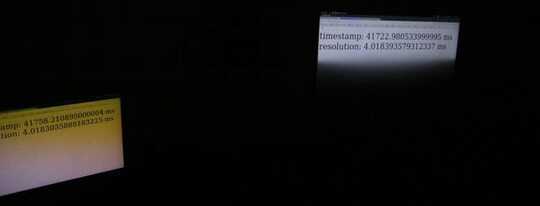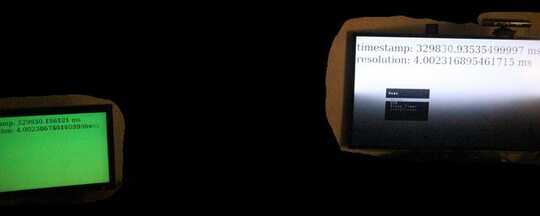1
I have a computer with a Radeon HD 7870 graphics card which is plugged to two screens:
- my main screen (a 24" LCD Hyundai W240D v2) through DVI
- my TV (50" LCD Samsung UE50ES6100) through HDMI
When I configure the 2 screens in dual screen (extended or mirror mode), I observe an input lag: when I move the mouse cursor on the main screen it feels OK but when I move it to the TV it feels laggy, but this is a subjective observation. How can I measure or at least estimate the input lag between the 2 screens?
I have a Canon EOS 550D (aka Digital Rebel T2i in some countries) reflex camera that I can use to take pictures from 1/4000 to 30 seconds. My first thought was to display a video showing a time count with micro seconds on the 2 screens then take photos and see if the time is the same on the 2 screens. Will it show me the input lag? Is this protocol correct?
Update: I know that I won't be able to measure the absolute value of the input lag because I have no absolute reference, but I'm still interested in knowing the input lag between these 2 screens.


Your description is a little unclear. Are you saying that everything feels "laggy" when you are running in dual monitor mode? Or that the TV feels "laggy" but the main monitor doesn't? – Jason C – 2014-12-02T00:27:13.580
@JasonC: I wasn't sure if laggy was the correct word. In other words, when I move the mouse cursor on the 24e screen it seems ok but when I move it on the TV is feels different. – A.L – 2014-12-02T00:28:46.513